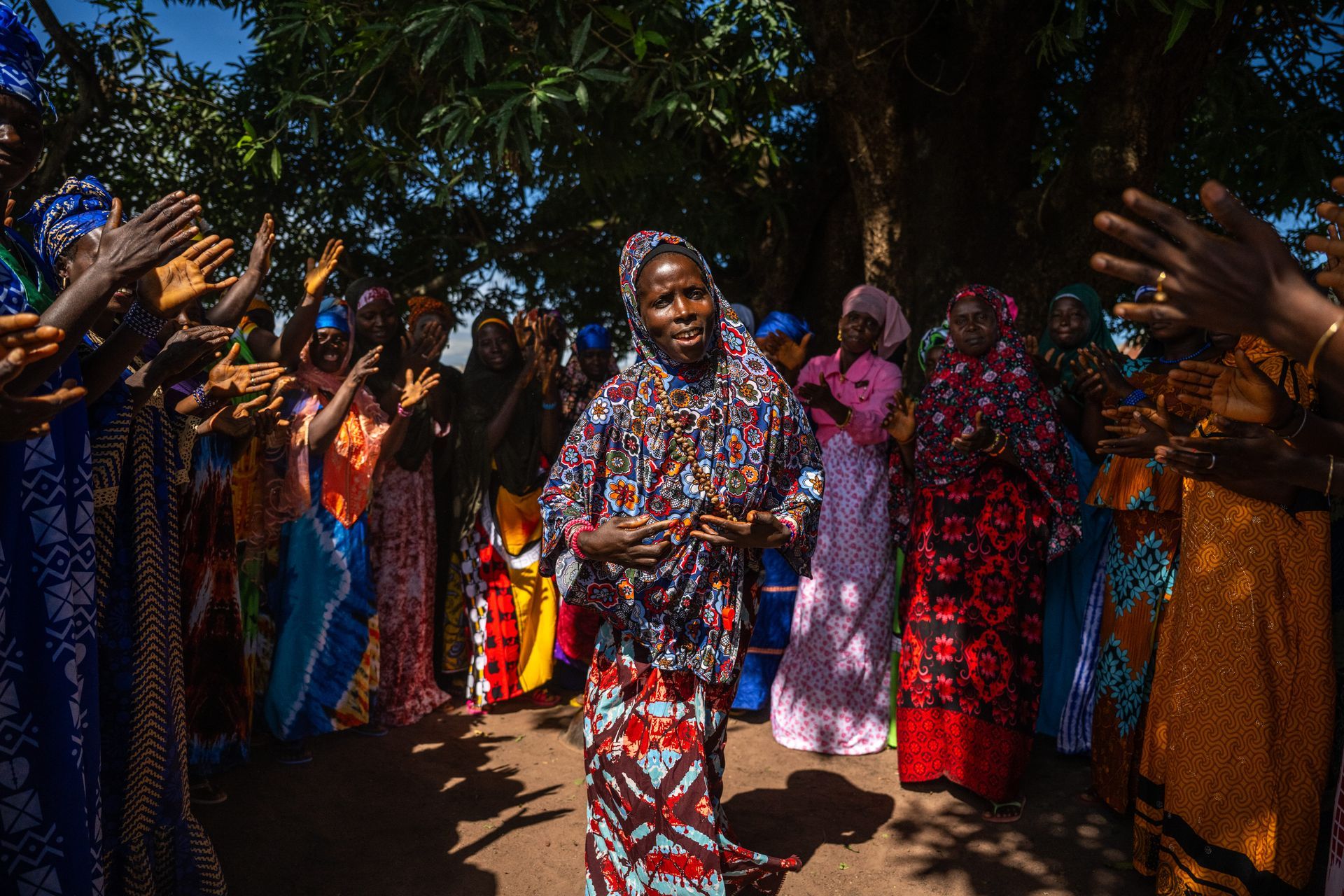Sub-Saharan African Sustainability – New Awareness and Generational Shifts
Bangaly Kourouma, Information Systems Division Manager at Austin Energy and ISSP Governing Board Treasurer, shares the strategic opportunity of sustainability, scaled large to enable equitable economic development in sub-Saharan Africa. This goal is critical to both local populations and to balancing global interests.
Countries with mineral-rich soil are often among the least industrialized and poorest in the world, experiencing significant political and social instability. They also exhibit the highest population growth rates and enduring quasi-domination from developed nations that normalize exploitation as a model for success and stability. In this essay, I will discuss the non-negotiable aspirations, needs, and expectations of young Africans who are tired of promises and demand nothing less than a fair shot at the contemporary human experience.
Wealth and Stability for All?
Every modern human population seeks access to our basic amenities of contemporary life: clean water, electricity, infrastructure, modern education, economic stability, and environmental health. Sustainability attracts the attention of many around the globe, and particularly those in developing economies, with its promise to include all of humanity — irrespective of identity, economic means, or social status.
We share this planet with diverse species, flora and fauna, making Earth uniquely suited for human life. Sub-Saharan Africa harbors some of the most globally coveted natural capital, including mineral resources and raw commodities. With 42% of the world’s gold, 80%–90% of its chromium and platinum group metals, and 60% of its arable land in addition to vast timber resources, Africa — our second largest continent, covering about one-fifth of the Earth's total land surface — is by any measure indispensable to human sustainability. Despite this intrinsic wealth, local inhabitants — rightful custodians of their lands — often remain unaware of their environmental resources: the types, quantities, qualities, and potential utility of their natural capital. Meanwhile, foreign corporations and governments leverage this knowledge for their financial gain.
Leaping from Abidjan (Cote d’Ivoire) to New York (USA) – A Stark Difference
I am a native of Cote d’Ivoire, a former French colony that gained independence in 1960. My K-12 education provided little to no information of our immense mineral wealth and what it could accomplish. Instead, classroom emphasis was placed on studying industries producing finished products, all of which were beyond our economic capacity to replicate. I left Sub-Saharan Africa at 19 years old. During a decade of continued resource exploitation despite local challenges, my peers back home continued to confront ever-present social unrest, police brutality, inadequate and inconsistent education, and most unfortunately, a lack of opportunities after they achieved their educational targets. Conversely, I was fortunate to obtain advanced degrees in the U.S. and, pursuing my interests, began to make an impact in the professional world. For my elementary and high school peers, there seemed to be no opportunities available to an entire generation of Ivorians — stalled due to the conditions I just described.
Somehow in this complex socio-economic environment, foreign companies — aided by their countries’ military — were able to shield their raw commodity production and perpetuated inequality through unfair pricing structures and exploitation. Raw products, sold globally at highly profitable and locally prohibitive rates, were often returning to Africa to be sold with mark-ups that have been and continue to be unaffordable to most locals. Without adequate knowledge transfer, professional training, and economic resources, local populations remain dependent on foreign control — and vulnerable to fear-based contract negotiation tactics that resemble longstanding imperialist exploitations.
A Stubborn Imperial Past
These widespread post-colonial conditions across sub-Saharan Africa have not been without major consequences. Onslaught after onslaught to establish foreign-controlled political and economic systems have destabilized nations and their citizens in ways that are persistent to this day. Obliged to focus on basic survival needs, citizen voices are muted and local civic action thwarted. Education, training, health, evolving economic practices all take a backseat to subsistence living.
The result is that we face a dearth of employment offering a living wage. With some of the lowest income levels in the world — and its incumbent hunger — young people seek to emigrate to industrialized nations. Some young people view the possibility of more viable economic conditions to be worth risking their lives, confronting long treks through wilderness and the threats of thirst, hunger, armed smugglers, human trafficking, and unsound ocean-crossing vessels — all in the hope of a better future in one of the industrial nations.
The pernicious loss in this reality is the missed opportunity to further knowledge transfer and engender skill development in their native lands, necessary to any foundation of sustained industrialization for sub-Saharan Africa. This tragedy continues to set the course for explosive unrest among populations entrenched in poverty and dominated by foreign interests that control nearly all local resources for their own profit and interests. The situation parallels
Britannica's definition of imperialism: “state policy, practice, or advocacy of extending power and dominion, especially by direct territorial acquisition or by gaining political and economic control of other areas. Because it always involves the use of power, whether military or economic or some subtler form, imperialism has often been considered morally reprehensible…”.
Knowledge can truly lead to sustainability
Sub-Saharan Africa's exponential population growth further necessitates sustainability planning and initiatives that would ensure diverse engagement, economic growth, and equitable wealth distribution across these societies. The continent's younger generations seek equitable distribution of wealth, enabled by sustainability practices. Yet, developing local policy and governance to advance these initiatives holds its own set of challenges. Technological advancements and contemporary knowledge and social systems challenge traditional narratives, necessitating concrete benefits for local leaders. An equitable sustainability conversation begins with equitable access to information and recognition of key stakeholders' impact and contribution. Equitable exploitation of these resources is not achievable without an ecosystem by and for natives that can drive endogenous innovations and the entrepreneurial engine. Controlled competition where natives are given tax advantages and aided until successful is a requirement. Enabling robust, independent governing institutions that lead their efforts with targeted regulations, investments, and local labor training that serve local interests. This requires Stable governmental and political systems underpin this possibility and mitigate the risks of destabilizing mass social unrest.
Additionally, current geopolitical unrest outside Africa is closely observed as expansion of military conflicts represent a major risk to Sub-Saharan Africa. It is a global region that still lacks weapons of mass dissuasion such as nuclear arsenals, advanced endogenous military technologies, the ability to impose economic sanctions, etc.
The continent’s millennial and younger generations are now studying several models for prosperity, success, and stability. In discussion with my peers and other locals, the consistent theme is a desire is to achieve long-lasting peace and stability, equitable distribution of wealth, and competitive ingenuity and innovation. Yet, that possibility rests now on their shoulders. As such, sustainability offers them a set of tools and practices especially suited to this next wave of sub-Saharan leaders. Diaspora members, like myself, offer experience and guidance to accelerate these outcomes, contributing to capacity building for sustainable development while balancing outcomes for humanity's benefit.
About the Author:
Bangaly Kourouma
Information Systems Division Manager at Austin Energy
ISSP Governing Board Treasurer
PHOTO: Bangaly Kourouma | Parc Urbain Dominique Ouattara | Abidjan, Cote d'Ivoire
Read perspectives from the ISSP blog



